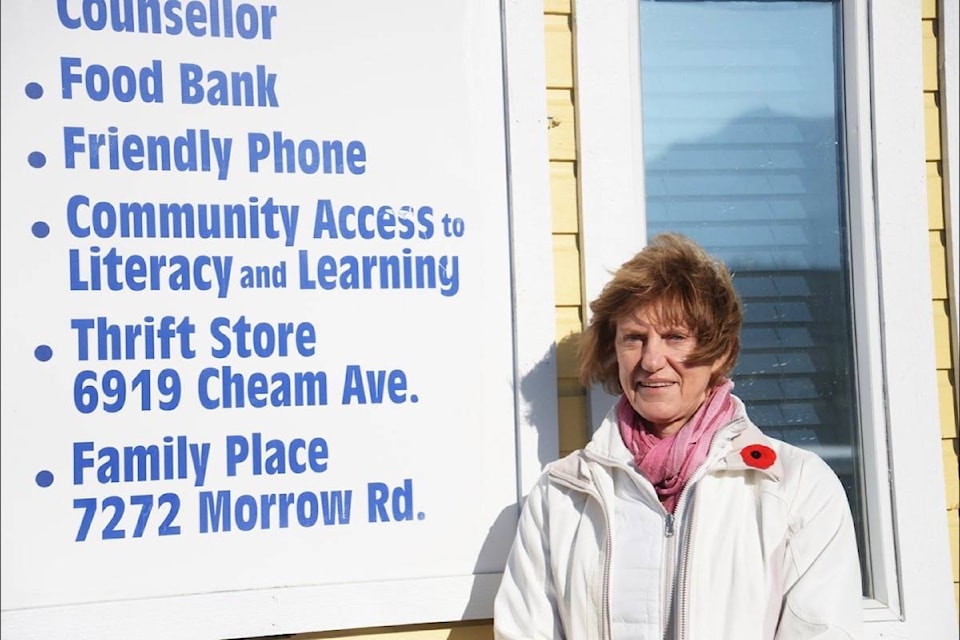Domestic abuse statistics from Agassiz RCMP show a rise in complaints and charges across Agassiz, Harrison, Popkum and local First Nations reserves over the last three years.
The number of domestic abuse complaints rose 24 per cent between 2014 and 2016 and the number of domestic abuse charges rose 56 per cent over the same time period.
The numbers might seem inconsequential; 134 reports of domestic violence in a population of 6,000 people is roughly 2.2 per cent. But the Canadian Women’s Foundation estimates that 70 per cent of spousal violence isn’t reported to police.
While local RCMP did not release the gender of victims, domestic abuse is an overwhelmingly gendered crime, with women and girls composing seven in ten people who experience family violence.
Despite the numbers, domestic abuse-specific resources are limited in the District of Kent. Agassiz Harrison Community Services (AHCS) executive director Bobbi Jacob says that needs to change.
“Chilliwack and Hope have provincially funded counselling programs [and] Agassiz does not have counselling specifically for families dealing with domestic abuse.
“It’s important that [domestic abuse] counselling is close to people who need it,” she says, adding victims who have to travel to seek help are put at increased risk. “How are you going to do that and explain to the abusive person where you were?
“I would like to have an emergency shelter here,” she says. “I think there’s a need for that.”
AHCS does have a family therapist and counsellor, and both are available to support domestic abuse victims.
“We do the best we can under existing programs to see those people,” Jacob says. “Other programs have specific counselling services. It would be nice if that were the case here.”
READ: Purple porches help start conversations about domestic violence
Victim Services manager for the Upper Fraser Valley Regional Detachment (FVRD) Marianne Brueckert says domestic abuse doesn’t always manifest in the form of physical violence, and misconceptions or stereotypes around how a victim should look or act make it even harder for people to access support.
“[Domestic abuse] can be a form of control…where there’s maybe not evidence of physical injury, but there’s emotional injury,” she says. “It can start very subtly and increase over the course of time.
“I think there’s a general, all-around wilting of the individual, where you pull the supports and the strength they have to the point where they feel like they don’t have anybody.”
There are a number of barriers victims face when they try to access support, Brueckert adds. One of the biggest barriers is money.
“Not only do they not have money to get a lawyer or get legal advice, they don’t have money to leave,” she says. “They don’t have money to support their children. They don’t have money to buy food. They can’t find accommodation.”
A lack of affordable housing is another issue. While temporary and transition houses can provide an immediate solution, they are ultimately just that – temporary.
“It’s a great option when you need to flee, but for a long-term solution, for a lot of people, that’s not where they want to be,” Brueckert says. “That’s not an ideal place. It’s a temporary, short-term solution.”
READ: Staff Sergeant awarded for efforts in domestic violence
In the Fraser Valley Regional District’s projected housing report, it’s estimated that only one new affordable rental unit is developed per year in the District of Kent, and only three in Chilliwack.
The Canadian Women’s Foundation reports that one in five single mothers in Canada live on low income, and women who leave a partner to raise children on their own are five times more likely to be poor than if they had stayed.
For anyone with concerns that a friend, coworker or family member is living in an abusive situation, Brueckert says the most important thing to do is simply be there for them as a non-judgmental friend and support system.
“You let them know that you’re there, you’re supportive, you’ll listen to them and you’ll help them get connected,” she says, adding that in situations of immediate danger, people should not be afraid to call for help.
“Often times people will be afraid of doing or saying anything. If you see someone being injured, you call the police.”

Hope
Ann Davis Transition Society: Stopping the Violence Counselling Program (604) 869-3201
Hope and Area Transition Society: (604) 869-5191
Chilliwack
Ann Davis Transition Society : Stopping the Violence Counselling Program Chilliwack (604) 792-2760
Chilliwack Community Services: Specialized Victim Services (604) 792-4267
